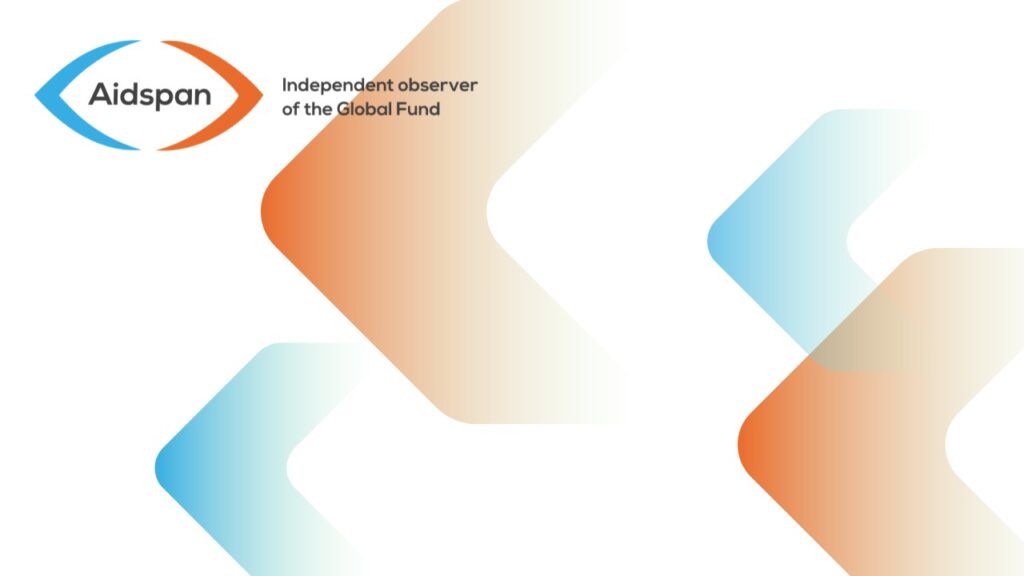
EARLY IMPACT OF NFM DISCOURAGING, SAYS EECA CIVIL SOCIETY
Author:
Tinatin Zardiashvili
Article Type:Article Number: 6
Lower funding for critical programming and restricted space for communities in decision-making cited as major detriments
ABSTRACT Civil society in Eastern Europe and Central Asia has issued a report warning of continued harmful effects of the Global Fund's new funding model (NFM) on their ability to maintain the existing level of programming and activities to respond to the region's burgeoning HIV epidemic.
Civil society groups in Eastern Europe and Central Asia continue to issue dire prognostications about the impact that the reduced contribution by the Global Fund to their harm reduction and other activities is having under the new funding model.
In an open letter signed by 24 civil society groups sent in mid-November to the Global Fund’s Board chair, Dr Nafsiah Mboi, the Eurasian Harm Reduction Network urged that the NFM allocation methodology be revisited in order to maintain the level of funding to middle income countries confronting a rising HIV disease burden.
In applying the NFM allocation methodology for the period 2014-2017, the Fund sought to redistribute funds towards those countries with the highest disease burdens and least ability to pay — a re-apportioning that, in the main, shifted the bulk of the funds away from countries in EECA towards countries in sub-Saharan Africa.
But for those groups working in EECA, the countries’ classification as middle-income clouds the reality that harm reduction and activities targeting key populations — including commercial sex workers, men who have sex with men and people who inject drugs — are not likely to figure prominently in already tight national budgets. They warn that this could lead to an even-greater expansion of the epidemic in the region that is alone in marking a significant increase in HIV prevalence.
By calculating allocations “only on the combination of disease burden and ability to pay fails to recognize the specific challenges of concentrated epidemics in [middle income countries]. As a result, the upper middle-income countries that account for 18% of the global disease burden are only receiving $1.2 billion, or 8%, of the funding available within the NFM,” the letter said. “Countries should not be punished for the declared income statements and for the achievements that they have made in HIV prevention and treatment in the past with support of the GF.”
Also of concern to the civil society groups under the EHRN umbrella is the narrowing of civil society space in the ongoing country dialogues even for the reduced amount of Global Fund support. They warn that this is squeezing those community-level groups out of discussions and, ultimately, contributing to a government takeover of discussion and policymaking at a critical time when civil society voices need to contribute to debate about how to transition away from the Global Fund’s support.
For most of the countries in the region, the letter warns, the NFM is having the exact opposite effect of what was intended: participatory dialogue emphasizing human rights and key populations are being contravened by the reduced funding.
Four countries are cited as already having experienced considerable problems in maintaining the level of harm reduction services available: Kyrgyzstan, Ukraine, Russia and Romania.
For example, in Kyrgyzstan according to the letter, “the application of the NFM methodology could result in almost a 50% cut of total annual HIV funding for both prevention and treatment (from $9.5 million in 2014 to $6.8 million in 2015 and an expected $4 million to $5 million in 2016. “This reduction can only undermine the HIV and TB responses and result in the escalation of HIV, TB and HCV epidemics among both PWIDs and the general population,” the letter said.
“We realize that we live in a resource-constrained and politically challenging environment and that there are many demands on countries and funders to address the needs of the world in the public health arena,” the letter said. “The challenge calls for closer coordination and collaboration between the Global Fund, donor governments, recipient governments, civil societies, and communities to prepare for and implement the transitions to sustainable HIV and TB responses in a responsible way. Let us not undo the good that has already been done.”
In response, Nicolas Cantau, the Global Fund’s EECA regional manager said: “Our global strategy for increasing impact in the current allocation period means more emphasis on high burden countries with the lowest ability to pay. However, the overall allocations from the Global Fund to the EECA region for the coming three years is at par with the previous three years’ disbursement amount. We will work with implementers and partners for prevention, harm reduction, treatment and care among key populations to be included and funded in national AIDS programs at the appropriate level for sustainable impact against the disease.”
